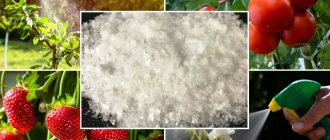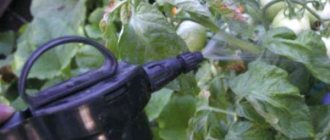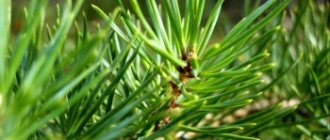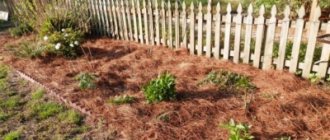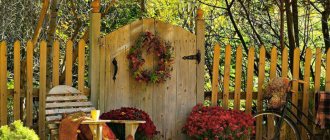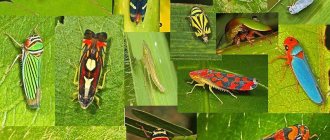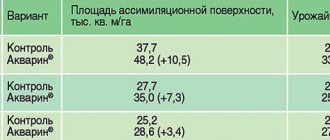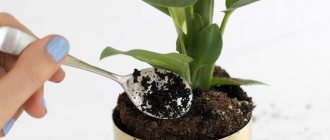Mulching is an agrotechnical measure, the purpose of which is to protect the soil from overheating and hypothermia, as well as from weeds.
In addition, properly performed mulching fills the soil with nutrients and improves its structure.
We have already talked about mulching in this article, so we will continue to talk about the subtleties that arise when using not sawdust or wood chips as mulch, but bark, both for agricultural purposes and in landscape design.
Also below you will find answers to questions about how to grind tree bark with your own hands and make mulch from it for landscaping, and learn about the features of using pine bark.
Differences from wood
Despite the fact that wood and bark are parts of a tree, the differences between them are very strong . Wood , that is, the inner part of the trunk, consists of strong and tough cellulose fibers, hemicellulose and lignin . The share of these materials in wood is 90–95% , the rest comes from various liquids, that is, tree sap.
Moreover, as you approach the center of the barrel, the proportion of liquids decreases.
Unlike wood, the bark consists of 50–70% , the rest comes from tree sap.
But this applies only to bast , that is, the inner bark, while the outer one consists of dead tissue of the inner bark, and the pores in it are filled not with tree sap, but with atmospheric moisture.
The fibers of the bast bark are soft and flexible, but the outer layer is hard and brittle. When rotting, the bast layer provides slightly less nutrients than wood, because they are formed during the rotting of cellulose, hemicellulose and lignin.
During these processes, substances break down into simple sugars and various trace elements , then become food for various microorganisms that convert them into humus. At the same time, the juices partly become food for microorganisms, and partly pass into humus, increasing the content of essential vitamins and microelements in it.
The nutritional value of rotted tree bark mulch depends on the percentage of bast and outer layers.
The more material from the outer layer it contains , because such humus will contain simple sugars, but the amount of vitamins and microelements will be insufficient for normal plant growth. Therefore, when mulching a site to increase productivity, it is necessary to compensate for the lack of vitamins and microelements .
Compared to shredded wood, shredded bark particles have a much lower density, so the total amount of nutrients entering the soil will be noticeably less than when mulching with shredded wood. Therefore, bark mulch most often used to protect the soil and change the appearance of the site.
Pine bark is the best mulch for the garden
Pine bark is a natural product given to us by nature. Today you can purchase or make several types of such material yourself, namely:
- small variety;
- middle fraction;
- large variety.
This type of mulch is an ideal covering for the soil. The fact is that pine bark crumbles and decomposes very slowly. As a result, such protective material is the most reliable and durable. The vast majority of bark is used to protect trees and various shrubs.
It is worth noting that such material is also an excellent fungicide of sorts, which prevents the appearance of parasitic insects. Thanks to this, every gardener can maintain his garden without the use of various chemical preparations.
But that's not all, the bark is an excellent natural shelter from freezing, as well as an ideal decorative design.
The main advantage of this material is that it is resistant to all external and negative factors. In other words, frost, snowfall and rain will not be able to destroy the bark, since it perfectly absorbs moisture and immediately gives it to the crops that it protects.
Large variety of pine bark mulch allows moisture to pass through perfectly, so watering can be done without removing it. It is worth noting that if before laying mulch watering was done daily and abundantly, then after covering with mulch you can moisten no more than once a week.
Dimensions and method of obtaining mulch
To mulch, the bark must be crushed, because large pieces will rot for decades , and during this time many pathogenic microorganisms will form under them, and colonies of pests will appear.
Most often, the bark is broken by hand into pieces of the required size, but they turn out to be quite large, and the thicker the source material, the larger the broken pieces.
If you cannot make small enough pieces in this way, you can pinch off the pieces using pliers , an adjustable wrench or other suitable tool. The disadvantage of this method is that it is highly labor intensive, so it is used only for producing small volumes of mulch.
much more efficient to process the source material using a wood chipper or garden shredder .
Milling devices and shredders crush the bark into fairly large pieces, so it is better to use rotary or knife chippers.
You can read more detailed information about the types of equipment that chop wood in these articles:
- Chip crushers;
- Wood chopping machines;
- Equipment for processing sawdust.
Various methods for removing bark, as well as a description of the equipment necessary for this, can be found here (Using bark).
In what cases is it used?
It is recommended to mulch the beds in early spring. You should first make sure that the soil is well moistened. Of no small importance is the removal of perennial weeds and the application of necessary fertilizing.
See also
Composition and types of universal fertilizer OMU, instructions for use. Read
It is also permissible to mulch in mid- or late autumn. In this case, it is necessary to remove large weeds and, if necessary, apply winter fertilizers. It is recommended to renew organic mulch once a year.
Expert opinion
Zarechny Maxim Valerievich
Agronomist with 12 years of experience. Our best country expert.
Ask a Question
The wood material is suitable for a wide variety of crops. It can be used for mulching beds with vegetable crops, fruit trees and berry bushes. The coating is also often used in flower beds and flower beds.
What is this type of mulch used for? Areas of use
Most often, bark mulch is used for filling:
- flower beds;
- areas around individual trees or other plants;
- beds with perennial plantings;
- paths;
- separate limited areas.
Mulching flower beds and flower beds with crushed bark improves the appearance of the area and pursues several agrotechnical purposes :
- reduces the rate of water evaporation, which means increases the interval between waterings;
- protects from sun and frost ;
- suppresses weed ;
- reduces the number of slugs and snails .
Due to the fact that fairly large pieces of 1–2 cm in size and 0.5–1 cm in thickness are most often used for mulching flower beds, their effect on soil acidity is minimal . After all, the decay time for such large pieces is 3–5 years, so the flower garden does not require special care and pleases with its beautiful appearance.
In addition, by combining bark of different colors, as well as using paints to change the color of part of the material, you can create beautiful compositions that will harmonize with plants both during flowering and at other times.
Mulching the area around individual plants or under trees most often serves decorative purposes , but can also be used as an agrotechnical measure.
Around beds with perennial plantings, bark mulch is poured, primarily for agricultural purposes, because it improves the properties of the soil and increases its fertility.
In addition, crushed bark gives the site a beautiful appearance, but it is not advisable to use it where annual plants are planted . Indeed, due to the long decay time and large size of the fragments, such mulch turns out to be less effective than that made from chopped wood.
Shredded bark is especially effective for filling paths in the garden or vegetable garden.
Indeed, due to its large size and long period of decay, such a cover has to be renewed after 2–4 years.
At the same time, the same backfill of sawdust or shavings has to be renewed 1–2 times a year.
When filling individual limited areas, this material is used only as decorative mulch.
If it is necessary to carry out not only decorative, but also agrotechnical mulching, then first lay a layer of sawdust or shavings treated with special reagents , then immediately add a layer of bark.
After six months, the layer of crushed wood will completely turn into humus and improve the structure of the soil, and the bark will last for several years until it completely rots, pleasing the eye with a pleasant appearance.
If you coat it with natural or acrylic paints, the service life of such a coating will increase several times.
Instead of chopped wood, you can lay crushed with a scarifier , because it is comparable in size to large sawdust or medium shavings, which means it will rot quickly.
What can tree bark be used for?
As a rule, tree bark is used for decorative and at the same time practical mulching of the soil on which coniferous plants or berry bushes grow, which prefer acidic soil, heathers and Erica, rhododendrons, azaleas, ornamental ferns, etc.
- What to plant in a flower garden on acidic soil?
Scheme of a stylish flower garden for areas with acidic soil.
You can also sprinkle garden paths with tree bark. And industrial soft wood bark, processed in a special way, is successfully used as flooring for children's and sports grounds, since it provides comfort during active movements and does not leave splinters.
Organic materials at hand, including tree bark, are certainly the most preferable when used in garden plots and vegetable gardens, as they allow you to save money and grow an environmentally friendly crop.
Which wood species to choose?
Most often you have to choose the bark of trees of different species, so you need to know how the species affects the garden . In addition, it is necessary to take into account the cost of the product , because in one case it is cheaper to take the bark and chop it yourself, while in another it is preferable to purchase ready-made mulch.
Another quite important parameter that affects the choice of bark or mulch is availability . Despite the fact that many stores send packaged bark mulch by transport companies or Russian Post, it can be found much closer and for a lower price. For example, take it from a woodworking company or independently remove it from branches cut in the garden.
Pine
Pine is the most common type of bark and mulch, because pine/spruce are the main species used in carpentry, furniture and many other industries.
Residents of settlements located next to pine or spruce groves can strip the outer bark directly from the trees.
If everything is done according to the rules, then such a procedure will not harm the pine trees, because sap flows through the inner , that is, bast part of the bark, and the outer part consists of dead cells of the bast layer .
However, it is better to use fallen bark, because in this case the tree will definitely not receive damage to the bast layer.
This bark can also be taken from sawmills and woodworking shops that produce carpentry.
Often the bark on them is waste, littering the area and creating a fire hazard, so there is a high probability that they will not raise the price for it, or even give it away for nothing. Often the source of bark is pine croaker , which is sold for firewood.
Like shredded wood, pine/spruce bark mulch acidifies the soil. This change occurs due to the activity of microorganisms that ensure its rotting of the special composition of tree sap.
However, the acidifying effect of even highly crushed bark will be much lower than that created by wood , and comparable to the effect of fruit trees on the soil. This must be taken into account where the acidity exceeds what is comfortable for the planted plants, so as not to harm them.
Larch
Larch bark is much more difficult to find than pine bark, because larch is not used in carpentry, and furniture from it is made only to order. Therefore, you have to look for it most often at sawmills , where the bark is sold separately or in the form of a slab.
Hardwood wood is very durable and highly impregnated with various oils, which reduces the rate of its decay . At the same time, larch bark mulch also acidifies the soil in the same way as pine trees, so it must be used with caution so as not to harm the soil.
Fruit
When pruning orchard , branches appear, the bark of which can be turned into mulch.
This material is used for agricultural and decorative mulching of most plants.
The exception is coniferous trees, on which the fruit bark has an extremely negative effect, which is why they begin to get sick.
In addition, , as well as pathogens of various diseases, more common it must be used with caution .
Pros and cons of bark mulch
Often pine bark is used in the front garden as a decorative covering around rose bushes or trees. In this case, in addition to giving a well-groomed appearance to the front garden, it performs two more important functions, namely:
- protects trees from severe frosts in winter, warming their soil;
- and in warm seasons it makes the earth cooler and retains moisture in it, preventing it from evaporating.
Today, the bark of coniferous trees is simply an ideal option as mulch. This component has the following advantages, namely:
- environmentally friendly material;
- looks great in various flower beds, due to which it is a favorite material of many landscape designers;
- does not fly apart during strong gusts of wind;
- does not contain various dyes;
- after decomposition occurs, no harmful elements enter the soil;
- the bark is durable in use, about 6 years;
- It has a high amount of antiseptic component in its composition, due to which various parasites do not multiply.
It is worth adding separately that such material has many advantages in use, namely:
- blocks weed growth;
- perfectly retains moisture in the soil and protects from drying out;
- there is no need to regularly apply mulch;
- does not allow a crust to form on the soil surface;
- protects against the appearance of various parasites, including moles;
- prevents the attack of various defects.
Pine bark mulch fits perfectly into any landscape. Moreover, unlike inorganic fertilizer, it decomposes and does not leave harmful waste. But it is worth emphasizing that it will not completely protect against the growth of weeds, it can slow down their growth and significantly facilitate the care of planted crops.
General material requirements
Having selected the type of wood and taken out its bark, you need to carefully inspect each piece , this will avoid the appearance of pests and diseases on the site. Most often, pests live in the bast layer, but bugs are often found in the outer layer.
If any of the pieces have mold or plaque of any color , then it cannot be used to make mulch. You should also remove any pieces that look wetter than others or are covered in mucus.
It is advisable to remove larvae and eggs hanging on pieces or located in holes , because treatment with antiseptics/insecticides does not always destroy pests or plant pathogens.
How to prepare and chop mulch with your own hands?
Having removed the defective fragments, the bark is sprayed on all sides with any aseptic/insecticidal wood products, and then dried for 5–15 days under a ventilated canopy.
Then it is crushed in any way, for example:
- break by hand (this is long and difficult);
- processed using a wood chipper or garden shredder (a fairly large fraction is obtained);
- spread on the ground in an even layer, then pass over it several times with a scarifier (the result is a fairly fine fraction, suitable for any mulching).
How to prepare mulch
First you need to remove the top layer of wood. Then, using a sharp knife or pruning shears, the bark is crushed. The pieces should have a diameter of 1 to 5 centimeters.
After this, the disinfection process begins. The bark is filled with water and boiled for 10 minutes. After the bark is removed from the heat, we do not remove it from the water.
This way she will receive useful moisture. You can, of course, carry out the disinfection process using an oven. But you need to monitor the temperature to avoid fire.
Laying
Treatment with aseptic/insecticidal preparations suppresses the vital activity of microorganisms necessary for rotting organic matter and turning it into humus, so the layer of agrotechnical mulch must be watered with special preparations :
- nitrogen-containing fertilizers, because microorganisms intensively consume nitrogen from the soil, worsening its characteristics;
- alkalizing substances (lime or ash solutions) that compensate for the increase in soil acidity;
- reagents containing the necessary microorganisms (Tamir, Baikal, Gorynych and others).
After processing the agrotechnical layer, you can lay the decorative layer . However, it is undesirable to cover the area with decorative mulch without laying an agrotechnical layer, as this will greatly worsen the condition of the soil.
Advantages and disadvantages of mulch
Mulch has its advantages as well as disadvantages.
- The benefits of pine mulch are as follows:
- beauty of appearance;
- antibacterial effect. The beneficial properties are that pests do not develop in such chips. Also, pine materials do not rot;
- antioxidant effect. Protects plants from diseases and radiation;
- evaporation of flavonoids, which not only prevent the development of crop diseases, but also strengthen the human immune system (when inhaled);
- anti-allergenic effect;
- slowing down the development of weeds;
- increasing the environmental friendliness of the soil;
- corrosion prevention;
- resistance to mold damage.
- Pine mulch also has several disadvantages:
- not used for newly planted crops (only from the third year after planting). This is due to the fact that this material significantly increases the acidity of the soil. For young plants this can be detrimental (the structure of the root system is disrupted, growth slows down, bud formation deteriorates, etc.);
- promotes the removal of nitrogen from the soil. Its deficiency causes harm to the plant, as a result of which it begins to turn yellow.
Consumption per 1m2 of territory
The thickness of the agrotechnical layer should be 3–10 cm ; a thinner layer will not be able to improve the soil structure, and a thicker one can turn into a breeding ground for pathogenic bacteria.
If a decorative layer is laid on top of the agrotechnical layer, then the maximum thickness of the first layer should not exceed 5 cm, otherwise this may lead to the appearance of ants.
The thickness of the decorative layer is selected based on many parameters, but usually falls within the range of 2–5 cm . Therefore, in most cases, to fill an area with agricultural and decorative mulch, its consumption is 0.5–2 bags of 50 liters per 1 m2.
Application of mulch
The benefit of using mulch in gardening is the creation of a protective layer on the surface of the soil, which promotes its restoration. You can also use it to diversify the appearance of your garden.
If you decide to use pine materials in your dacha, you should know the basic rules for the procedure. Everything will be discussed in detail below.
Did you know? Artificial silk and leather are made from pine wood. These materials are used to make clothing, shoes and furniture.
What can be mulched
You can mulch with pine bark whatever you want. It has a positive effect on the development of the following crops:
- Shrubs.
- Young flower beds (magnolia, heather, rhododendron, etc.).
- Fruit crops (strawberries, blueberries, wild strawberries).
Quite often, gardeners use this type of mulch to protect winter crops from frost. If you use large fractions (up to 8 cm), they will penetrate the soil better. If before the procedure you had to water the plants every 2-3 days, then a layer of natural materials will facilitate watering at intervals of 7-10 days.
Did you know? The South Asian pine, called Bunge, has white bark.
Using mulch in landscape design
Pine mulch is used quite often in landscape design. Gardeners can use it to improve the appearance of a site, giving it an aesthetic appearance.
Pine chips combine best with coniferous crops. If necessary, you can paint it in different shades using natural dyes. Thanks to this procedure, the garden area acquires bright colors, which only increases the attention to it from people passing by.
Video: Pine bark in landscape design
How to mulch correctly
It is better to start mulching in May. At this point, the soil will become looser. The garden preparation procedure is as follows:
- Get rid of fallen leaves and remove weeds along with their roots.
- If the soil is dry, water it with water (calculated at 40 liters per 1 m²).
- Apply fertilizer. Deepen organic matter (horse manure, peat, compost) by 20 cm. Use 8 kg of fertilizer per 1 m². You can also use minerals. 50 g of urea, 20 g of potassium nitrate and 30 g of ammonium nitrate are distributed per 1 m².
- Lay down a 15cm layer of pine chips.
There are several ways to use mulch:
- Place rotted manure and cover it with pine bark.
- Mix horse manure and pine chips in a 4:2 ratio. After this, mulch the beds, laying out a 7-centimeter layer.
Also, the height of the flooring depends on the type of soil. Clay soil is covered with 2 cm of mulch, and sandy soil with 8 cm.
Ants
Often on various forums, users who mulch their garden plots with coarse mulch complain about the appearance of ants .
The reasons for their appearance are different, but they always come only to places where there is a lot of food, that is, various insects.
If the mulch was not treated with aseptic/insecticidal preparations before laying , then there is a high probability that slugs or other insects will appear under it , which can attract ants .
In addition, if agrotechnical mulching is carried out in large pieces of bark (length/width exceeds 1 cm, and thickness is at least 0.5 cm), then the rate of its decay is sharply reduced, because microorganisms can feed only on very small fragments.
Therefore, such a mulch layer attracts various insects that feed on dead wood and can cause the appearance of ants. If you perform all the stages of mulching correctly, then the ants will not come , because there will not be enough food for them on the site.
Some tips from experienced gardeners
Today, thanks to the experience of experienced gardeners and gardeners, which they happily share, it is much easier for novice farmers to carry out various manipulations on their site. We invite you to familiarize yourself with some tips that will help you avoid mistakes when applying mulch for the first time.
So, what do experienced gardeners advise:
- When this material is laid, it is necessary to ensure that the mulch layer is not poured close to the trunk of the tree or shrub.
- It is not recommended to use coniferous mulch before May. The fact is that the bark prevents sunlight from reaching the ground, so the first young may appear very late.
- Before you start using mulch, the soil needs to be thoroughly moistened or this procedure must be done after a good rain has passed. It is important to understand that the fine and medium fractions do not allow water to reach the plants in full.
- If a sunny area is mulched, the bark layer should be much thicker, unlike the darkened areas.
And, of course, it is worth remembering one golden rule: fresh pine bark is not used as mulch. Since such material contains a large number of harmful elements that can affect the growth of young animals. And of course, you need to remember that even the driest material should be thoroughly dried in the sun.
Where should you not use this mulch?
Despite all the advantages, bark, in particular pine bark, is mostly needed for decorative purposes, for which it is first crushed and quite often painted in different colors.
Therefore, when you need to seriously improve the soil or change its structure, it is better to use other materials , for example:
- sawdust;
- shavings;
- wood chips;
- chopped straw;
- chopped hay or tops.
During the process of rotting, crushed wood loosens the soil well, and the green mass contains many nutrients.
Moreover, all these materials rot much faster , especially when adding animal or bird excrement, as well as special preparations.
In addition, the ideal way to improve the structure of the soil and increase its productivity is to add rotted bedding for pets , because such a mixture contains:
- chopped wood, which improves soil structure;
- manure or litter, which is a source of nutrients and stimulates the reproduction of necessary microorganisms;
- urea, which compensates for the loss of nitrogen, which is drawn from the soil by microorganisms involved in converting organic matter into humus.
If it is necessary to combine a strong impact on the soil and decorative improvement of the site, then first add compost or humus, then dig up the entire site, and then cover it with decorative mulch.
If for some reason it is impossible to dig up the site, then this procedure is dispensed with, although the effectiveness of agrotechnical measures is slightly reduced.
Improvement of individual areas
When decorating individual areas of the territory, it is necessary to solve several problems, the main of which are:
- impossibility of annual maintenance of the soil surface;
- the need to clearly separate the mulched area from the rest of the space.
To solve the first problem, the soil before laying decorative mulch is treated with a scarifier , which loosens the top layer of soil and also removes plant debris and moss that impede the free movement of air.
If possible, then after the scarifier it is advisable to treat the area with a needle aerator , this will improve the permeability of the soil to water and air, and also increase the productivity of the soil.
To eliminate the second problem various design solutions are used , for example, they fill the entire space with decorative mulch of the same color, then lay a plastic mold along the border of the area and fill it with crushed bark.
Having filled the internal space with bark mulch, they pull out the form, after which a fairly clear boundary remains between coverings of different colors .
Sometimes transparent plastic sides are used for separation , which can be left after laying the decorative material.
This method allows you to create quite complex designs and is especially effective when using materials of different colors.
What is soil mulching
Mulching not only protects the plant from drought and pests, but also performs a decorative function.
Mulching is an agricultural technique that involves covering the soil with a layer of organic or inorganic material. This procedure is carried out both in greenhouses and in open ground.
Mulching allows you to solve the following problems:
- retain moisture in the soil;
- prevent plant hypothermia;
- protect the root system from overheating;
- prevent the leaching of nutrients from the soil;
- prevent the growth of weeds;
- protect the fertile soil layer from erosion;
- decorate the area.
Options for using mulch in landscape design - photo gallery
Mulch is suitable for rock gardens and flower gardens
Decoration of the garden area
Mulch protects crops from frost
Mulch will add originality to the garden
Decorating a flower garden with mulch
Various materials of both natural and artificial origin are used as mulch. These include bark, which has the following advantages:
- During the process of decay, it increases the fertility of the soil and saturates it with nutrients.
- Growing blueberries, blueberries, cranberries, heathers, rhododendrons and conifers requires a slightly acidic soil pH. It is this mulch that will help achieve the required indicator.
- The material filters water and prevents harmful components from penetrating the root system.
- Bark mulch prevents the outer soil layer from hardening and eliminates the need for frequent weeding. This is especially true when growing plants with a shallow root system, which can be damaged by systematic loosening.
- The bark contains phytoncidal elements that prevent the development of diseases such as gray rot, fungal infections, and root rotting.
- The bark is distinguished by nemotacid qualities, that is, it prevents the appearance of soil nematodes. These are pests for which no means of protection have been developed to date.
- The bark layer creates favorable microclimatic conditions for the appearance of earthworms. They improve the structure of the soil, increase its breathability and fertility.
- The bark protects the soil from pests.
However, it is worth considering that this material is used for perennial plants, but it is not suitable for annual crops.


